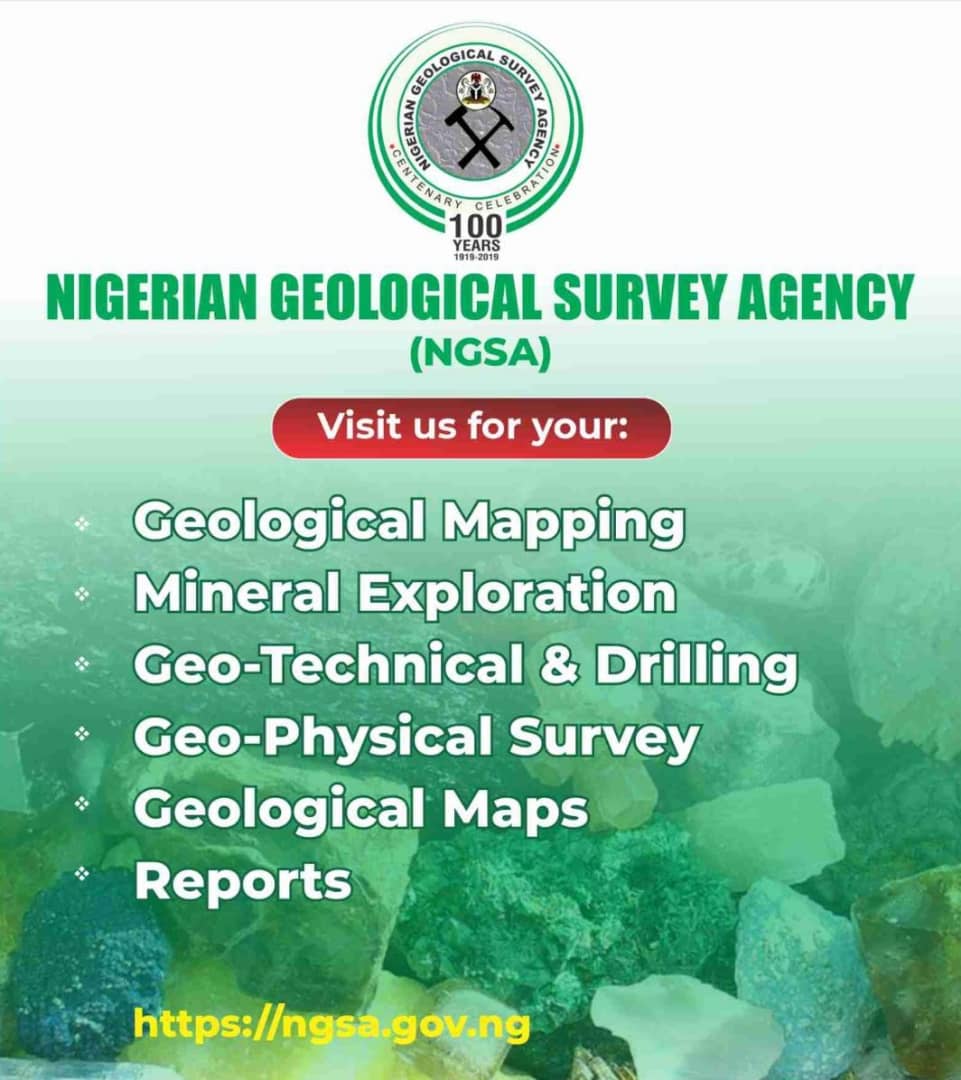
The Director-General, Nigerian Geological Survey Agency (NGSA), Dr Abdulrazaq Garba on Tuesday, said the Agency is to some extent prepared to monitor earthquakes and tremors, adding that efforts are being made to achieve national coverage as well as ensure that early warnings are issued where necessary, as is the practice in developed countries around the world.
The Director-General who discussed the development during an exclusive interview with our correspondent in Abuja, commended the Buhari administration and the support of the Hon Minister of Mines and Steel Development, Arc Olamilekan Adegbite and the Hon Minister of State, Dr Uchechukwu Ogah for the commitment that led to the recent improvement of the technical capacity of the Agency to monitor seismic events.
‘Some years ago, the NGSA acquired five Seismographs which were installed in the following locations Kaduna, Keffi, Bwari, near Abuja and one in the University of Abuja, Gwagwalada.’

Discussing the basis for the acquisition and installation of four new state of the art seismographs, the respected Geologist said: ‘We later discovered that for a National Geological survey like ours to operate with optimal efficiency, we need top-of-the-range type of seismographs.’
‘So, NGSA acquired four top-of-the-range Guralp seismographs, the same type being used by the British Geological Survey (BGS) and the United States Geological Survey (USGS).’
‘The four new Guralp seismographs replaced some of the ones we have before, as well as extended some to new locations that need seismograms, pending when we are able to procure more.’

Dr Garba, who is the president of the Nigerian Society of Economic Geologists explained that the idea is to gradually procure and install seismographs in order to achieve National Coverage for Nigeria, stating that the agency is currently focusing on areas in and around Abuja.
Discussing the distribution of the four new Guralp seismographs, Dr Garba explained that the NGSA upgraded the one at the NGSA headquarter in Abuja, and also the one in Kaduna, adding that one new Guralp type seismograph has been installed in Ilorin to complement seismograph in the University of Ife along that corridor.
The Director General discussed the advanced features of the new Guralp seismographs saying: ‘The new ones are automatic such that once it is calibrated, you can install a program on your phone and access its data via your mobile handheld, adding that the seismographs are connected together such that they can be viewed from one mobile phone.
‘With the current settings of the new Guralph seismographs, we don’t have to travel to extract data from the seismograph station or have people to consistently monitor the station. we only give command via the handheld and we receive what we need, as a matter of fact the system is self-diagnostic and adjustments can be made remotely,’ he added.
Discussing additional features of the Automated Guralp seismograms, he said: ‘Guralp seismographs are designed to automatically report any instance of tremors and earthquakes,’ stating that the geophysicist can always manipulate them, and this has a lot of positive significance for geophysical development of Nigeria.
‘From here at the head office, we can see what is happening in Ilorin, Kaduna, Keffi because the seismographs are networked together and connected to a central system here in the headquarters, and can be accessed via a mobile phone.’
‘As soon as the calibration is complete, our seismograms will be able to automatically log-on to the international network of seismographic observations, a development that will enable Nigeria contribute to global seismic reports,’ he said, noting that it will avail Nigeria an opportunity which hitherto was not possible.
While saying that Nigeria needs more technology-driven seismographs in order to secure the country against earthquake disasters by issuing early warning signals, he noted that current records on the new seismographs reveal that there was low tremor in Shaki area of Oyo State.
‘The seismic stations are working efficiently, they are extremely sensitive and have been reporting even minor tremors, even the major tremor in Greece was captured by our seismic station here in Abuja,’ he said.
He disclosed that NGSA has been archiving records of tremors in order to enable it carry out some predictive analysis of tremors. ‘This is a role that the geological survey is expected to play if it has adequate equipment needed to issue warnings for public safety,’ he said, adding that NGSA needs more seismographs to be able to capture sufficient record on which we can rely-on to correctly predict and issue Early Warnings on possible seismic events that may happen in the country.
He described the advocacy for early warning systems as good. However, he explained that ‘early warnings have to be predicated on reliable and accurate dataset. Therefore, there is the need to increase the number of seismographic stations across the country to achieve national coverage and generate sufficient data of quakes or tremors in this country for some time for a credible predictive analysis to be carried out.









